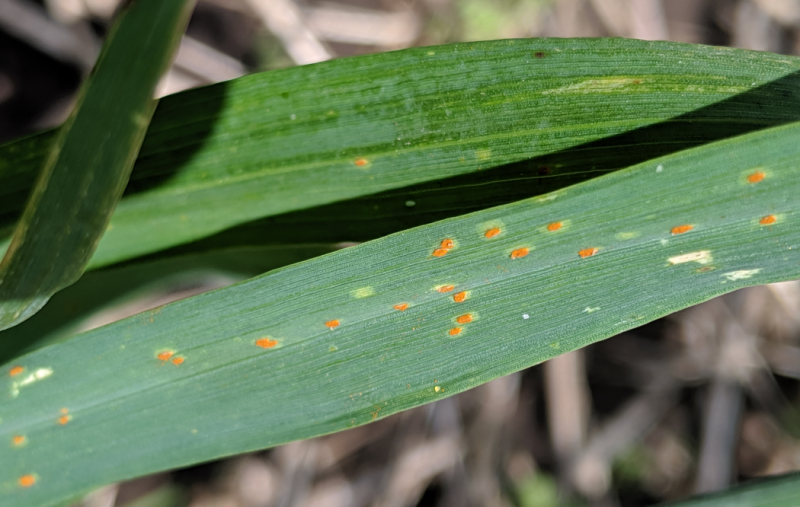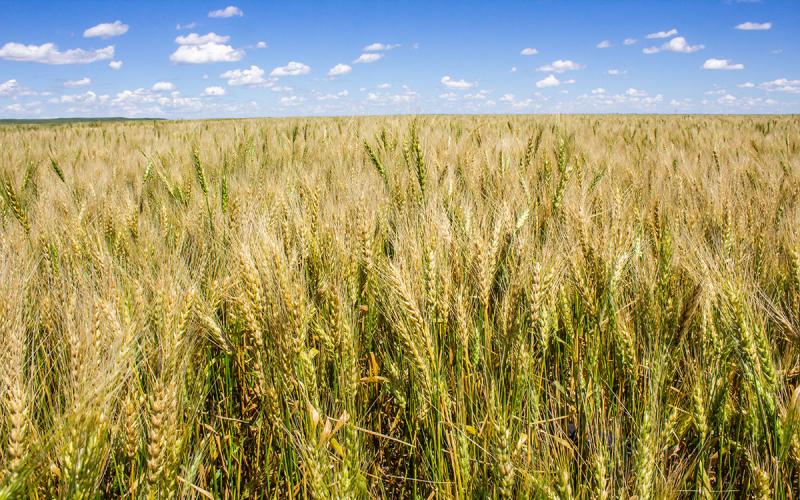Written collaboratively by Emmanuel Byamukama, former SDSU Extension Plant Pathologist, Sunish Sehgal, and Shaukat Ali.
Stripe rust and leaf rust were found in winter wheat plots at the South Dakota State University research farm in Aurora. Some winter wheat breeding lines had moderate level of stripe rust developing (Figure 1), where leaf rust was observed at very low levels also in a few breeding lines (Figure 2). Observation of these two rusts indicates that we have inoculum in our area, therefore winter wheat fields should be scouted until wheat is done flowering.
Identification
Stripe rust can be differentiated from leaf rust by the color and the arrangement of pustules on the leaves. Stripe rust has yellow pustules arranged in a linear (“stripe”) fashion on the leaf (Figure 1) whereas leaf rust has orange-brown pustules that randomly distributed on the leaf (Figure 2). Both rusts can be found occurring on the same plant or leaf. Inocula for the two rusts come from the Southern states since these rusts do not overwinter in South Dakota.

Stripe Rust
Stripe rust or yellow rust is caused by a fungal pathogen, Puccinia striiformis f. sp. tritici and infection and disease progress is favored by cooler temperatures and wet conditions (at least 8 hours of leaf wetness). We are still experiencing cooler nights (<60° F) and several locations have had a few rainfall showers, these conditions favor stripe rust development. Warmer conditions (>75° F) curtail progress of this rust but infection can still take place under cool night temperatures.

Leaf Rust
Leaf rust or orange rust is caused by a fungal pathogen Puccinia triticina. Leaf rust is favored by slightly warmer temperatures 68-77° F and at least 6 hours of free moisture. Leaf rust usually does not reach severe levels and when found, it occurs in clusters in a limited area of the field. However, scouting for leaf rust is also encouraged where a susceptible variety was planted and if winter wheat is done flowering.
Management
Stripe rust has been observed to cause significant yield loss in the past in South Dakota. For wheat fields found with stripe rust and if winter wheat is not past flowering, a fungicide should be planned. A fungicide that has also efficacy on Fusarium head blight such as triazole fungicides would be recommended. Strobilurins (QoI) fungicides are not recommended after wheat has headed because these have been found to increase mycotoxins in grain if applied after wheat heading. Fungicides effective against stripe rust and also Fusarium head blight can be found in the publication, “Management of Small Grain Diseases Fungicide Efficacy for Control of Wheat Diseases.” Fungicides effective against stripe rust are also effective against leaf rust.


